The first great subdivision of mankind, the one that gave remarkable diversifications in culture and the arts, …was that into “nomads” and “sedentaries.” We can also take this into account in the search for the origin of those apparatuses designed to close, to ensure locking, whether locks or padlocks.
The first “lock” was probably one consisting of a wicker oval that came out of the hinged door and engaged in another wicker ring attached to the jamb. A corkscrew was passed through the oval, and this prevented the door from being opened …A tool was needed with teeth corresponding to the holes within which the corkscrews were, as high as the holes drilled in the deadbolt: slipped into a special recess in the deadbolt itself it could lift the corkscrews and, remaining in place, the deadbolt thus freed from the catches could be operated.
Excerpted from The Key – History and symbology of keys locks and locks
Bergamo, Lucchetti Editore.

The key is not just a simple metal tool used to close and open locks and padlocks. The key also has its symbolic roots in earlier times, since ancient Egypt the symbolic value of the key as an object or as a term itself is undoubtedly rooted in memory and tradition. Often a key was depicted in the heraldic emblem, taking on the meaning of power, rather than the use of the phrase “handing over the keys of the city,” to indicate submission to invaders who having already broken down the protections of the walls certainly did not need keys.
The key as a magic symbol
Since the key is therefore a very powerful symbol, even in magic it acquires meanings that go far beyond its simple use; often used as artifacts, they were used together with locks for example in love potions in which the passion of the beloved was imprisoned in a locked casket.
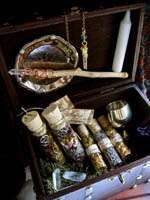
The decoding key
Another aspect related more directly to its use is its use as a term to indicate the ability to understand, for example, a text and thus have the key to read it or better yet in cipher systems, puzzles and secret codes the decoding key is precisely necessary for reading the message.

The key in music
Speaking instead in a less technical and more artistic key, the clef enables the correct reading of the notes written on the staff, associating the correct note with its position on it according to the various keys of reading among which the best known are the flywheel and bass clefs.
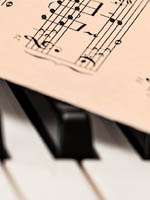
Key and architecture
Also a fundamental basis in buildings and a symbol of stability, the keystone is precisely a worked stone placed at the apex of an arch or vault, an indispensable element for unloading the weight borne by the arch on the side pillars.
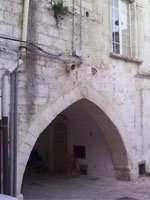
To this day the key retains its charm and charisma, and continues to be associated with meanings that are important to us, such as solving something; having the key to success, going through the keyhole, ever-present symbols that make precisely the word “a key term.”
Among all the symbols and topics related to keys, surely security has its weight and importance. The key has always locked and protected along with the locks our possessions, apartments, offices, and documents.
The key to the house is always present and reassuring, so much so that losing the keys puts anguish and raises doubts and fears about the future.
That is why the key is such an important object that should not be underestimated and should be updated as one does with the rest of the security systems.
Key types
In addition to the aforementioned keys present in the early days of their history, there is a panorama of keys with multiple characteristics and differences.
Variants include some types dedicated to the high-security world, such as double map keys or European profile dimple keys; for this type we refer you to the articles“DOUBLE MAPPING: Security in the Balance?” and“MOIA Blank Keys: Let’s Get Clear” on moiaserrature.co.uk.
With regard to traditional locking systems, it is possible to distinguish keys according to their characteristics that make them along with their corresponding cylinders suitable or unsuitable for certain needs both in terms of security and space or practicality.
Antique or cam wrench
The antique or cam key is definitely the first type of key that we can also find in all homes. Such a key is mainly used in the interior doors of the home, in furniture such as old cabinets or vintage objects or anything that needs simple locking with a low cost. Therefore it does not offer a high degree of security, but it is very practical in certain contexts and offers an easy possibility of duplication.
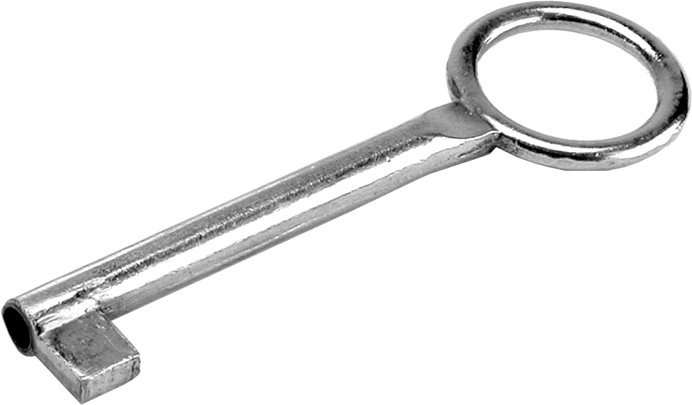
Socket key
These are metal or plastic keys that have a triangular, square, double barb – 3 mm Pin or cross shape (called a FIAT impression) on the end. Such keys are usually used in water or gas doors, hatches, or otherwise in those locks where high security is not required.
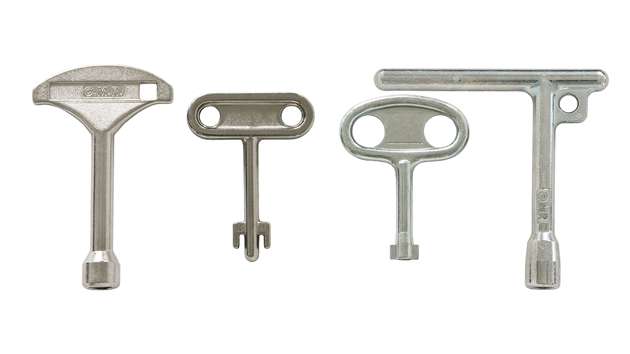
Standard or slotted wrench (universal profile)
As technology progressed, there was a shift to a type of key called a standard or cut key, which provided a higher level of security than the old keys by reducing their weight and size. Universal profile keys used in the past on entrance door cylinders have now mostly been replaced with high-security lock and key systems, but their use still remains on all other applications such as office furniture locks. This is the most common type of key and is composed in the blade of teeth and depressions that once inserted into the lock, raises the pins aligning them and allowing the barrels to rotate, which will move the latch via the cam or cam to which it is attached.
In addition to the aforementioned pin tumbler locks, there is a plate-cylinder cam locks variant that uses the same type of key, but due to the smaller size of the plates-cylinder cams it allows for the creation of smaller locks that can therefore be used in contexts where installation space is small or greater discretion is needed, even if only aesthetically. The most common uses in this case are therefore application on mailboxes, chests of drawers, showcases, bulletin boards, counters, technical furniture, street furniture, for electric gates and for key selectors in general…
Technological and constructive evolution also allows us to use the keys on locks made of alternate materials from the classic models in zamak or die-cast metal. And so, using, for example, technopolymer materials, we can make plastic locks and keys in a variety of shades and with characteristics that make them particularly suitable for use in extreme environments such as the nautical sector where high salt concentration generally causes corrosion problems on metal locking systems.
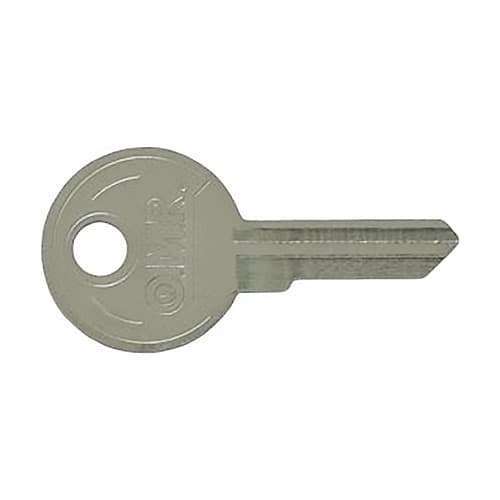
Reversible or double-sided wrenches
Reversible keys belong to the same type as standard keys, but they have teeth on both sides of the barrel allow the key to be used regardless of the direction of insertion. Undoubtedly a very practical system that avoids the possibility of inserting the key in the wrong direction and thus the risk of unnecessarily forcing the lock so as to damage it by bending it.
The main feature of this type of key is undoubtedly practicality: this type of key is routinely used in cars and motorcycles.
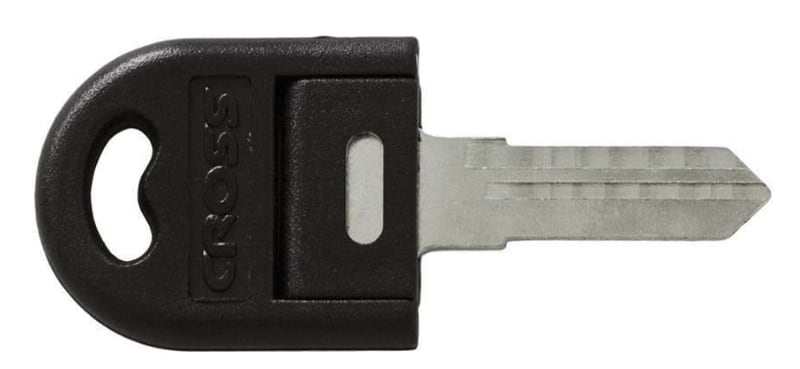
RPT key
Tubular keys have a special cylindrical shape and are used for locks in which the pins are arranged in a circular fashion around the perimeter of the cylinder.
Use is mainly in locks on removable hard drives or kensington cables, gaming, or vending, checkout counters and automated machines, precisely because of the small size of the key and the special circular pin system that makes it more difficult to force by bumping.
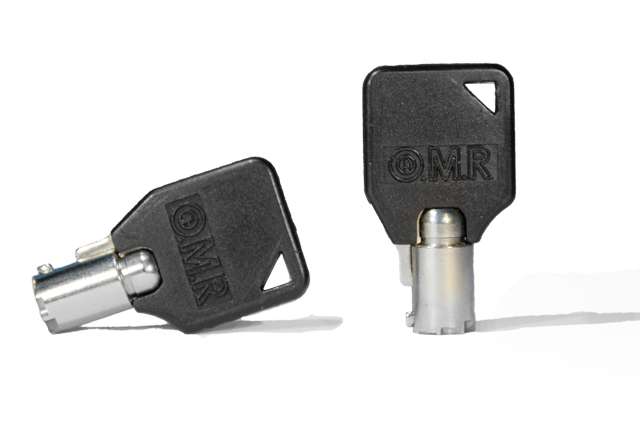
Jack wrench
An alternative to the tubular key, it offers the security of not being able to be duplicated like a regular key at hardware stores. Also available in a reprogrammable version, it is used in applications where a high degree of security is required such as safes, slot machines, vending machines or safes.
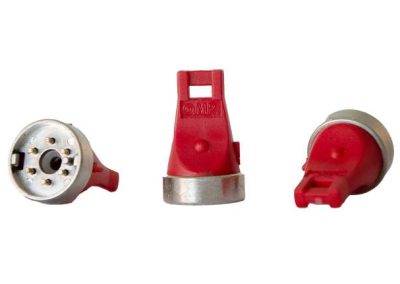
Cross key
Cross keys are a further advancement of the standard key, easily duplicated, they allow for a greater degree of security while maintaining the innate convenience of universal profile keys. The cross key can be seen as a cross between a standard wrench and a tubular wrench, in fact it has 3 rows of teeth positioned at 90° on the three sides and a flat side that usually has to be placed at the bottom and indicates the direction of insertion. The special shape of the key and the small size of the necessary entry hole also make it suitable for use in those contexts where it is necessary to camouflage or hide the key entry or use in spaces where other types of keys are too bulky.
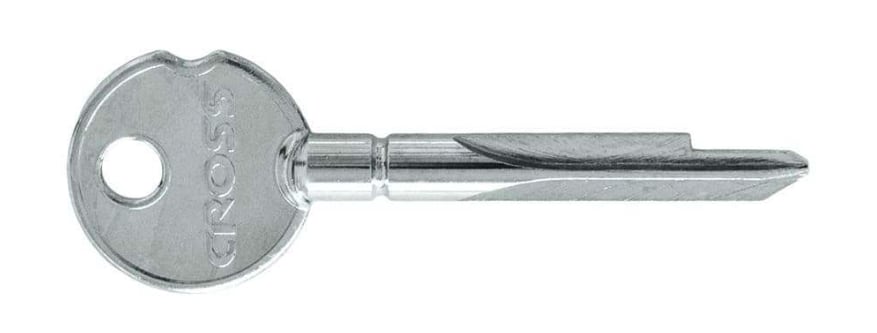
The types of encryption
In order to work, the keys must have a “map” of the lock in order to fit completely inside the barrel, align the pins or plate-cylinders, and make the rotation.
Such a map is called an encryption and thus allows a series of keys to be encoded on a series of locks so that those locks can be opened only with the right key.
Locks usually come with these variations in key management
KEYED ALIKE (KA)
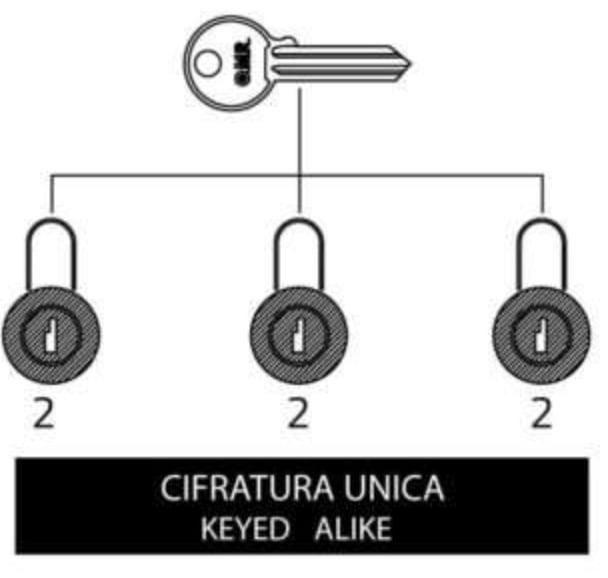
KEYED DIFFERENT (KD)
Each key shares its code with a cylinder and therefore will only be able to open that lock. With this system it is also possible to create complex systems in which, for example, having out of 10 locks, 3 with the same coding and thus the possibility of being opened by interchanging keys with each other and the remaining 7 with different ciphers and thus usable only with their respective keys.
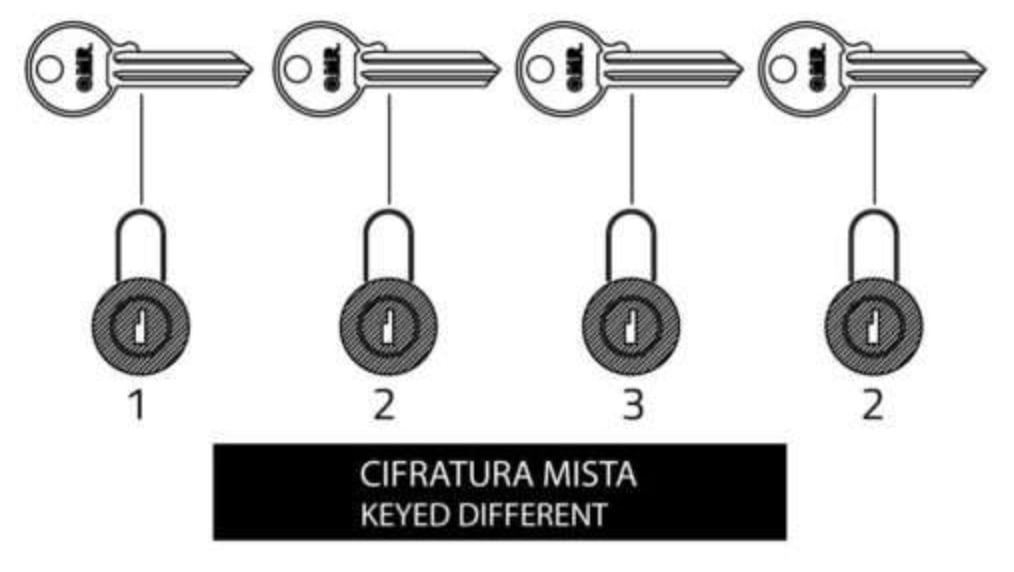
MASTER KEY SYSTEM (MK) PASSPARTOUT
It allows you to open different locks that have different keys between them and thus achieve multi-level key management.
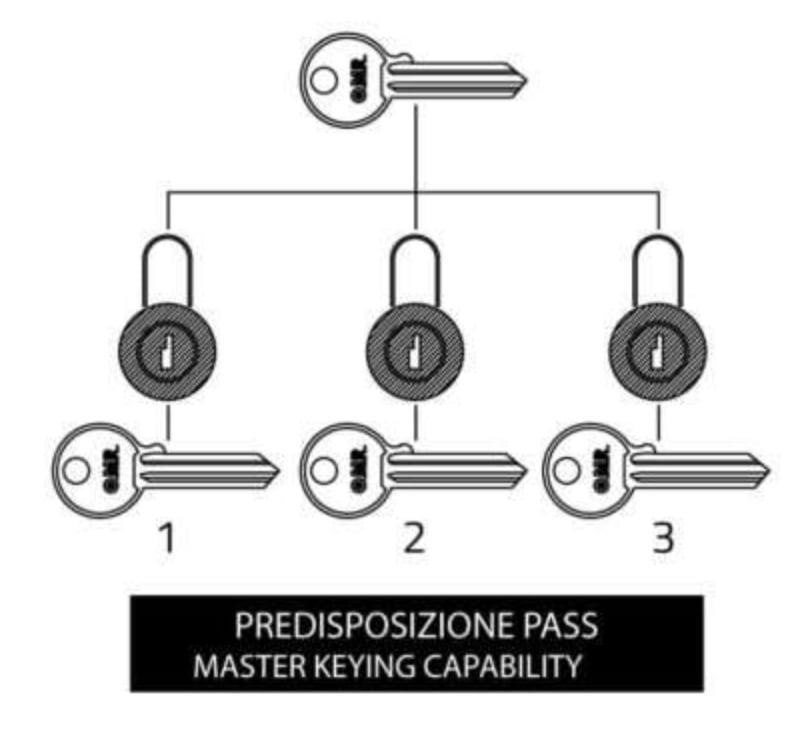

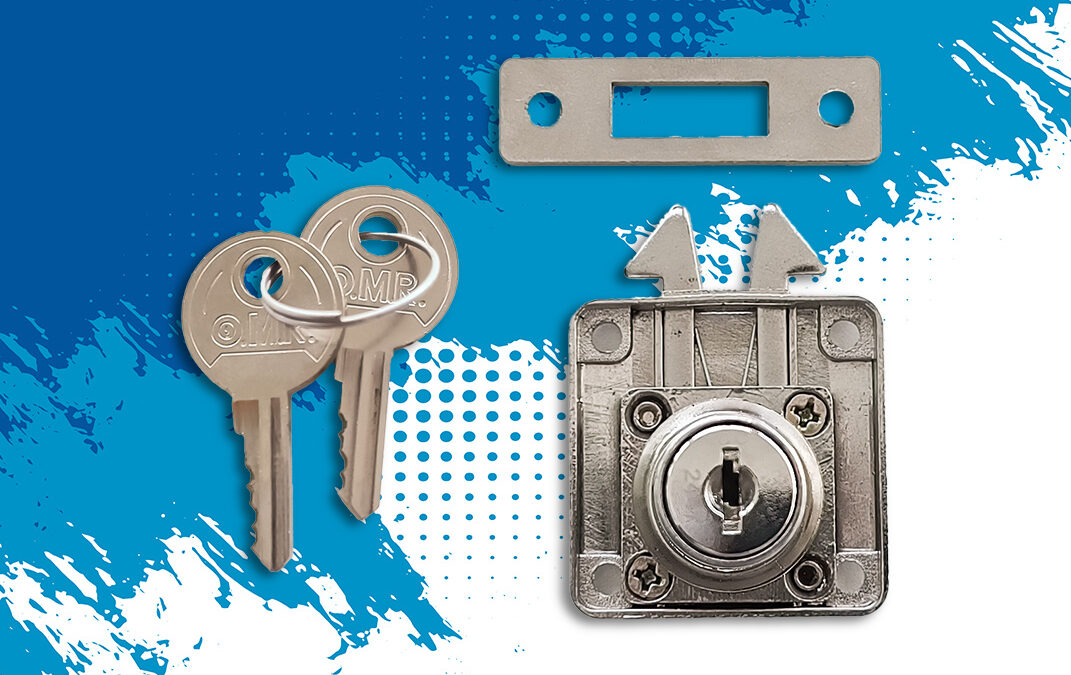
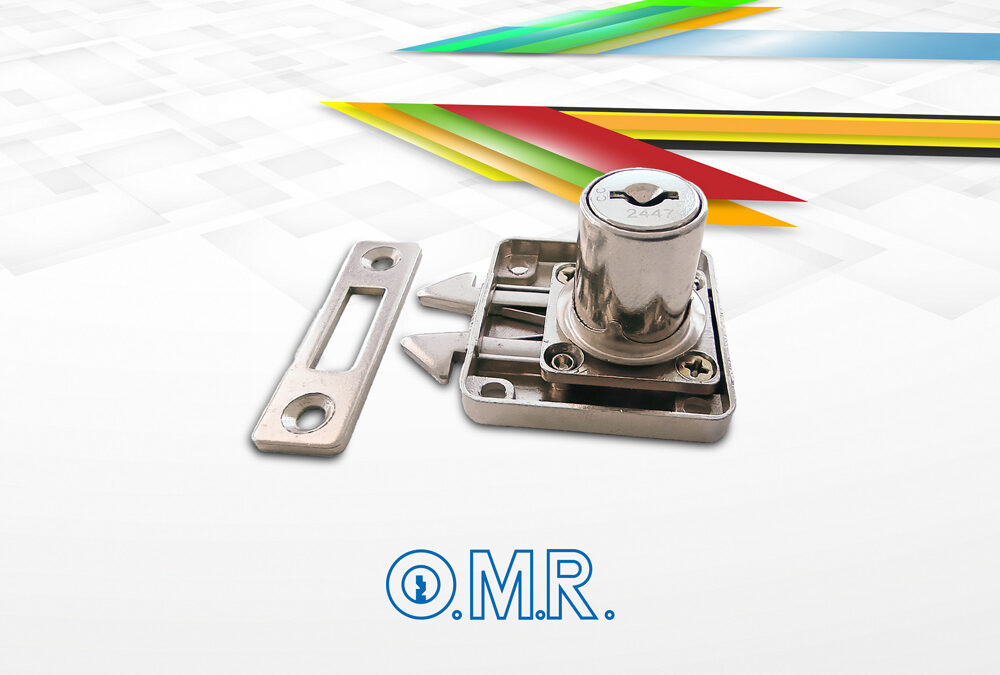
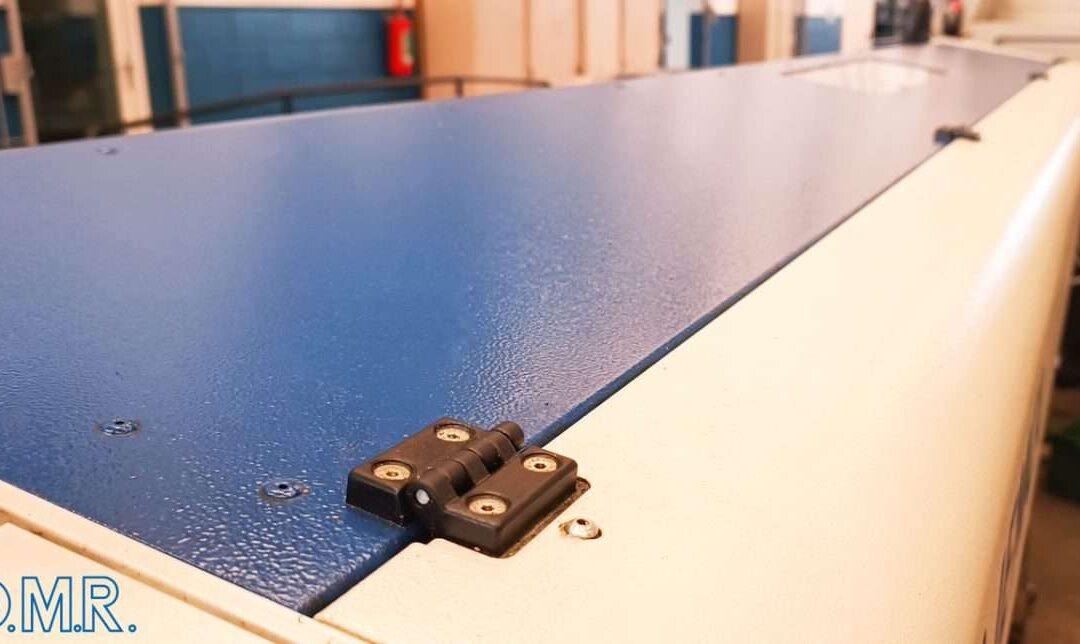
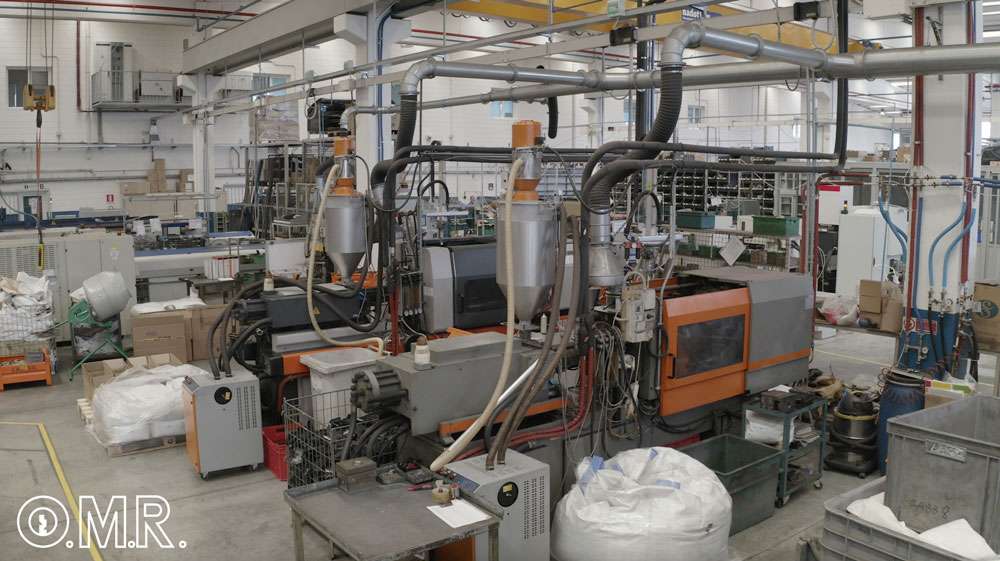
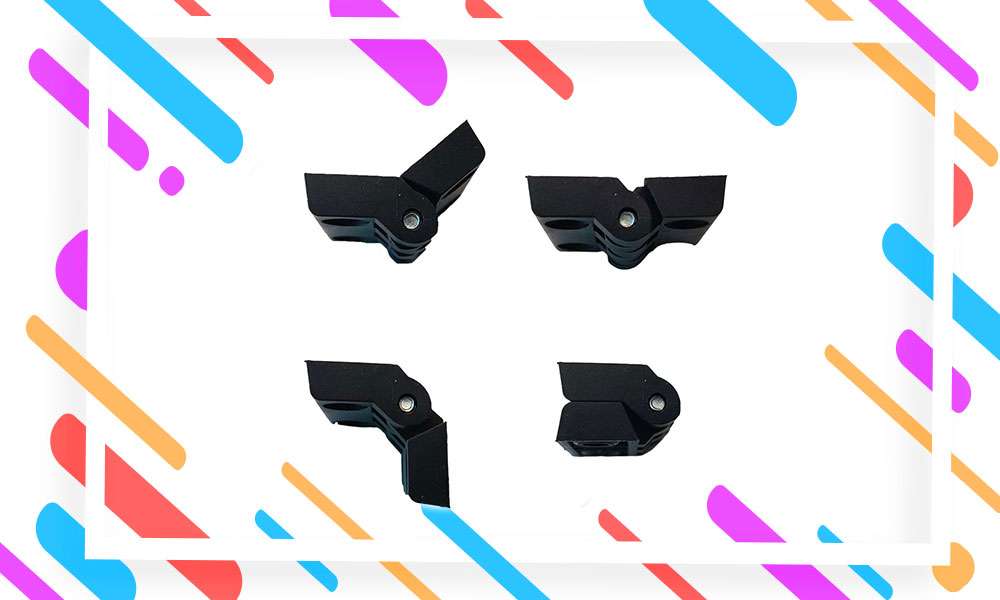
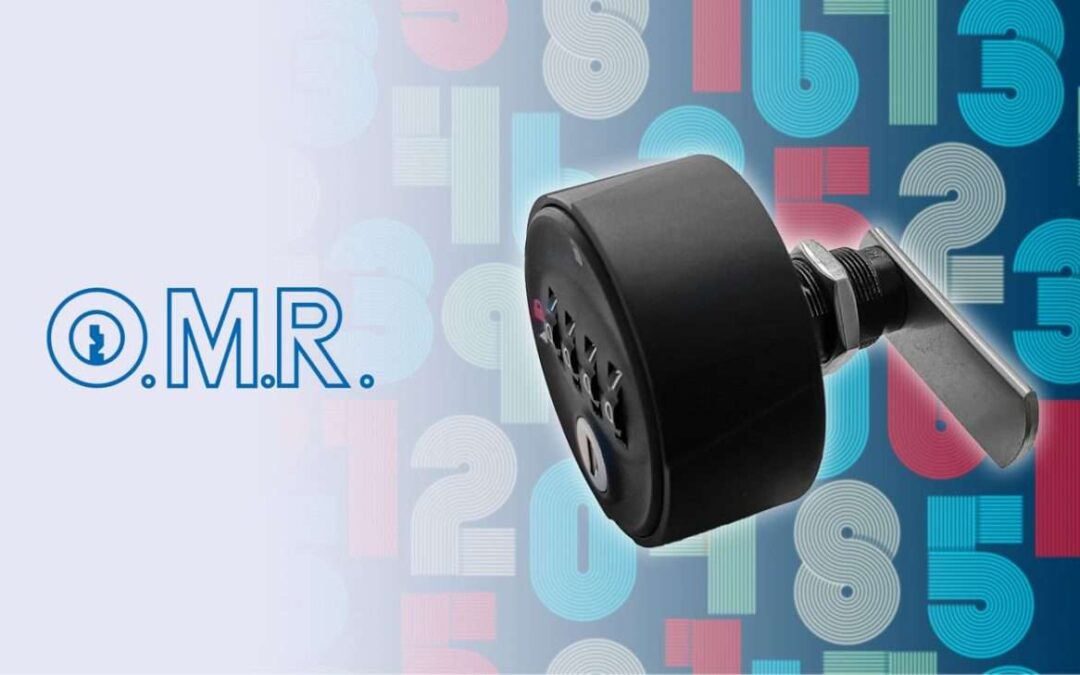
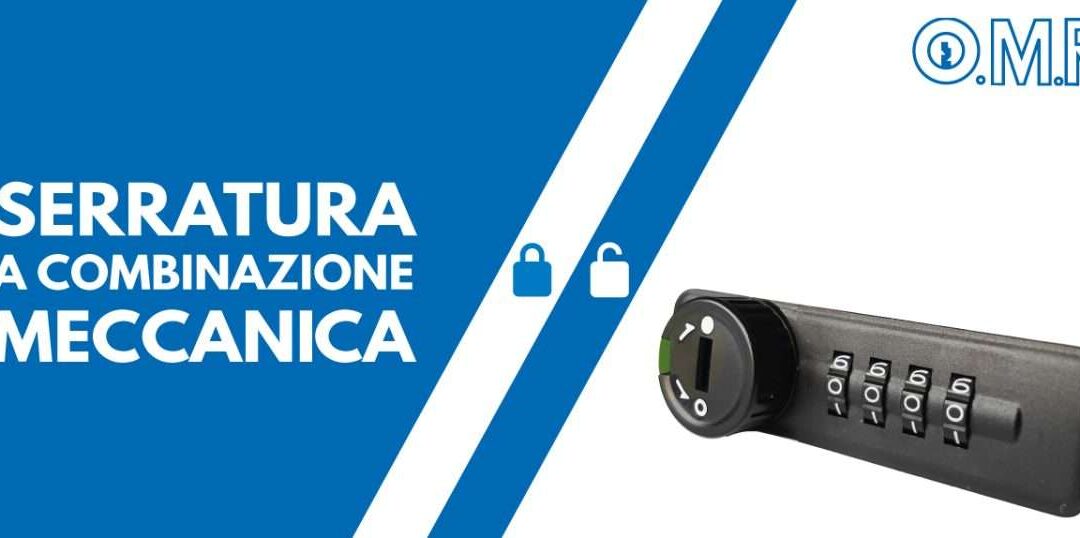
0 Comments